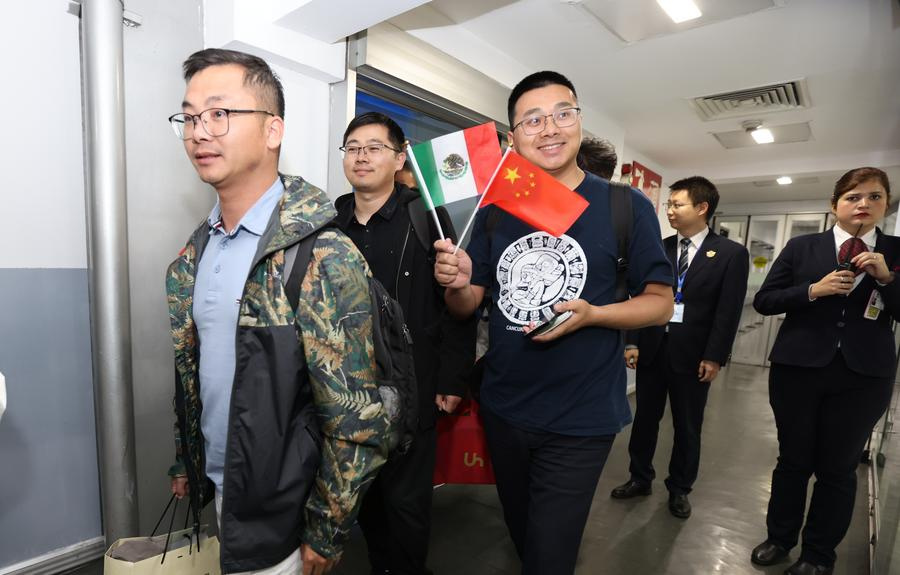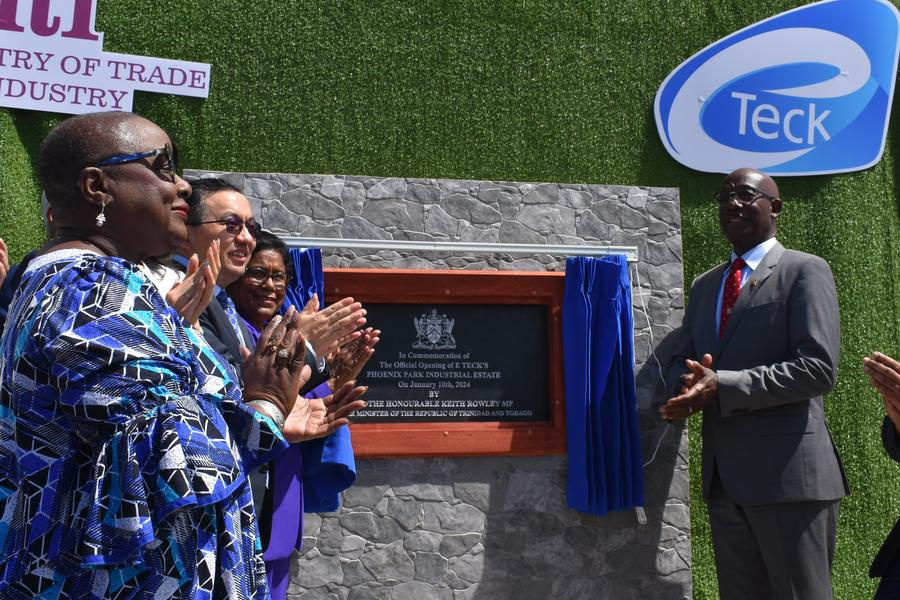China, LAC countries inject momentum into global development in past decade

Passengers of the first flight on a direct air route linking south China's Shenzhen with Mexico City, the capital of Mexico, arrive at the Benito Juarez International Airport in Mexico City, Mexico, on May 11, 2024. [Xinhua/Li Mengxin]
A total of 22 LAC countries have joined the BRI by signing different cooperation memoranda. China has become the region's second-largest trading partner and has signed free trade agreements with five Latin American countries.
by Zhao Kai, Xi Yue and Miao Peiyuan
MEXICO CITY -- Since Chinese President Xi Jinping proposed building a community with a shared future between China and Latin America and the Caribbean (LAC), a decade have passed, during which cooperation between China and LAC countries has gone from vision to action, from plan to reality.
China and LAC countries are constructive forces for global governance. In a new period of turbulence and transformation, the world faces multiple challenges including the Ukraine crisis and the Palestinian-Israeli conflict. China and LAC -- a region that is experiencing a collective awakening -- aspire to jointly promote the peaceful settlement of differences and disputes between countries, and have constructively participated in the political settlement of burning international and regional issues.
In May, China and Brazil issued the common understandings on the political settlement of the Ukraine crisis, calling on the international community to jointly play a constructive role in de-escalating the situation and promoting peace talks.
On climate governance, China has shared experiences in sustainable development and protection of marine ecosystems with small island states in the Caribbean. It has also invested in the expansion of renewable energy capacity and in infrastructure projects to mitigate climate change, thereby improving the well-being of the local population.
On poverty reduction, China has transferred advanced agricultural technology to Caribbean countries such as Antigua and Barbuda, Dominica and others, setting an example of equitable cooperation between large and small countries and helping local farmers increase their income.
China and LAC countries are encouraging forces for cooperation and development. From infrastructure construction to trade to emerging scientific and technological fields, the two sides have been cooperating closely, jointly promoting the Belt and Road (BRI) cooperation with a spirit of openness, inclusion and mutual benefit.

Trinidad and Tobago's Prime Minister Keith Rowley (1st R), Minister of Trade and Industry Paula Gopee-Scoon (3rd L), Chinese Ambassador to Trinidad and Tobago Fang Qiu (2nd L) and other officials attend the launch ceremony of the Phoenix Park Industrial Estate in Point Lisas, the second-largest port in Trinidad and Tobago, Jan. 10, 2024. [Xinhua/Zhu Wanjun]
In Trinidad and Tobago, the Phoenix Park industrial estate, designed and built by a Chinese company, was inaugurated in January. In Peru, the Chancay Port project built by China is in full development.
A total of 22 LAC countries have joined the BRI by signing different cooperation memoranda. China has become the region's second-largest trading partner and has signed free trade agreements with five Latin American countries.
China and LAC countries are driving forces for mutual learning between civilizations. China and LAC both have long history and splendid cultures. Through mutual learning and personnel exchanges, the two sides have learned from each other and advanced together, becoming an important part of the progress of human civilization.
This year, new direct flights between Mexico City and Shenzhen were launched. Routes such as Beijing-Madrid-Sao Paulo, Beijing-Madrid-Havana and Beijing-Tijuana-Mexico City have been put into operation, forming a bridge for more frequent people-to-people communication and exchanges between China and LAC countries.
At the Copan archaeological site in Honduras, Chinese and Honduran archaeologists have been collaborating since 2015 to explore what they call a "time tunnel" to the Mayan civilization.
A Latin American saying goes, "The only way to be profitably national is to be generously universal." Currently, China is concentrating its efforts on modernization, while LAC countries are focused on developing new stimuli for economic growth.
The two sides are strengthening cooperation on a solid basis, jointly advancing the building of the China-LAC community with a shared future. In so doing, they are making new contributions to the building of a community with a shared future for mankind.
Xinhua correspondents Yan Liang and Wu Hao in Mexico City also contributed to the story.
The views don't necessarily reflect those of Qiushi Journal.
























